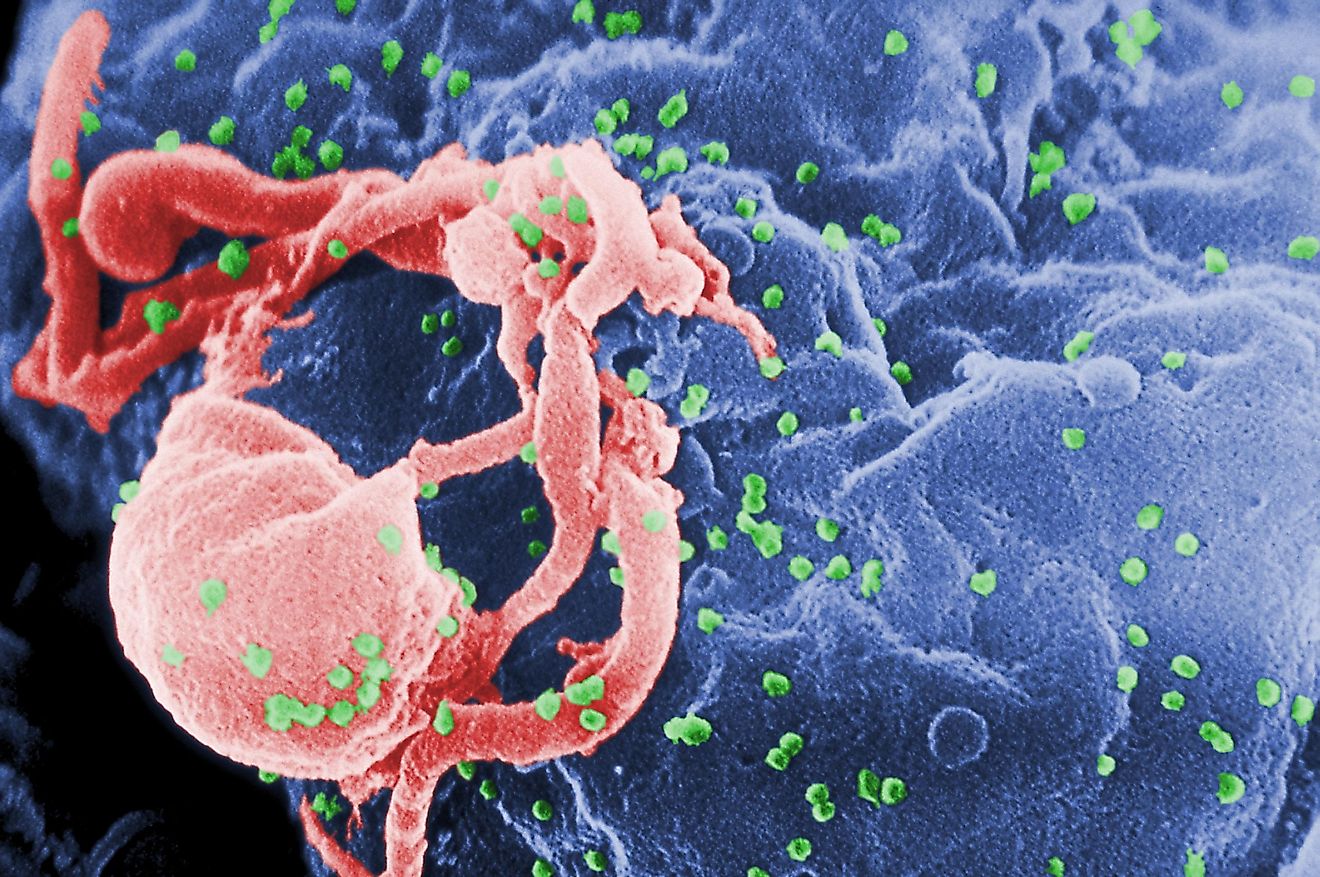What Is The Difference Between HIV And AIDS?

- AIDS and HIV are not the same.
- AIDS has killed over 32million people since the early 1980s.
- Not all HIV-positive indivdiduals will develop AIDS.
HIV-AIDS is a pandemic that has killed over 32 million people globally since it was discovered. The CDC first recognized AIDS in 1981, and the HIV virus was discovered during the early-1980s. The virus is believed to have originated from west-central parts of Africa in the early twentieth or late nineteenth century. There were over 37.9 million individuals on the planet living with HIV in 2018, and this includes the 20.6 million patients from southern and eastern Africa. A diagnosis of HIV was deemed to be a death sentence in the past, but currently, individuals with HIV can live near-normal life-span if they adhere to their antiretroviral treatments.
What Is The Difference Between HIV And AIDS?
About 40 years have passed since AIDS was discovered, and yet the phrases AIDS and HIV are still used interchangeably. The two terms are not the same, and mixing them up can be very misleading, although it is very easy to confuse the two terms since HIV can cause the condition known as AIDS.
What Is The Human-immunodeficiency-virus (HIV)?
It is a virus that weakens the immune system, leaving people vulnerable to other illnesses and infections. The virus attacks the CD4 cells in an individual's immune system and lowers the body's ability to fight off illnesses. The white blood cells can fight several viruses in the body. However, some viruses like HIV can never be eliminated once they enter the body. HIV infection is a life-long condition since there is no cure, although there are several scientists working to find a cure. However, Individuals with HIV cannot develop AIDS if they take antiretroviral treatment at the early stages of infection. Such treatments can help minimize the effects of HIV by either halting or slowing its progression. Antiretroviral therapy helps lower the amount of the virus in the body to undetectable levels. At such low levels, the body of an infected person can stay healthy, and HIV cannot be transmitted to other people.
What Is AIDS (acquired-immune-deficiency-syndrome)?
AIDS is the disease manifesting from human-immunodeficiency-virus infection and it is considered to be the last phase of HIV-infection, which occurs when an individual's immune system is damaged by the virus. An HIV positive individual is considered to be having AIDS if they start developing opportunistic illnesses irrespective of the CD4 count, or their CD4 cells count is below 200 cells per cubic-microliter. Most of these opportunistic infections can be caused by parasites, fungi, viruses, and bacteria that are usually controlled by an individual's immunity system. AIDS is a complicated condition with symptoms varying from one individual to another. The symptoms of AIDS are related to the infections developed by an individual with a damaged immune system. Without proper medication, an HIV positive individual can develop AIDS within less than 10years after contracting the virus. The rate of progression of the virus depends on several factors, including health care standards, the presence of other illnesses, genetics, patient's general health, and age.
The Cause Of HIV/AIDS
AIDS was recognized for the first time in 1981 when health workers noticed an unusually high number of opportunistic diseases and cancers affecting a particular group of people. Researchers traced the cause of the illness back to HIV-1. HIV is transmitted through contact with certain bodily fluids, particularly when having unprotected sex. Sharing needles and syringes with other people can also increase the risk of getting the virus. The risk of transmitting the virus via blood transfusion is quite low in most countries due to the strict blood screening systems. A mother who has AIDS or is HIV positive might pass the virus to the baby during childbirth, pregnancy, or via breastfeeding. In the absence of antiretroviral therapy, the risk of transmitting the virus during or before birth is 20%, and during breastfeeding, its 35%. Treatment reduces the risk of the baby getting the virus from his/her mother to less than 5%.
Opportunistic Infections Associated With AIDS
According to the CDC, opportunistic infections are illnesses that occur frequently and are severe in people with weak immune systems. Some of the opportunistic infection associated with AIDS includes candidiasis, cytomegalovirus, toxoplasmosis, pneumocystis pneumonia, cryptococcosis, and tuberculosis, among others. Individuals with AIDS can get several viral-induced cancers such as Burkitt’s lymphoma, central-nervous-system (CNS) lymphoma, and Kaposi’s sarcoma (KS), among others. KS is quite common among AIDS patients and it has affected over 20% of them. The most common cancer that affects about 20% of HIV patients is KS. The second-most common type of cancer that has killed over 16% of the AIDS patients is lymphoma. Lymphoma and KS are caused by the human-herpes-virus, while cervical cancer is caused by HPV (human-papilloma virus).
Does HIV Always Result In AIDS?
No, not every HIV-positive person will develop AIDS. With proper treatment, most people don't get AIDS. When the virus is kept under control using appropriate medications, people with HIV would never become immune-deficient. Therefore they will end up living a normal healthy life.











